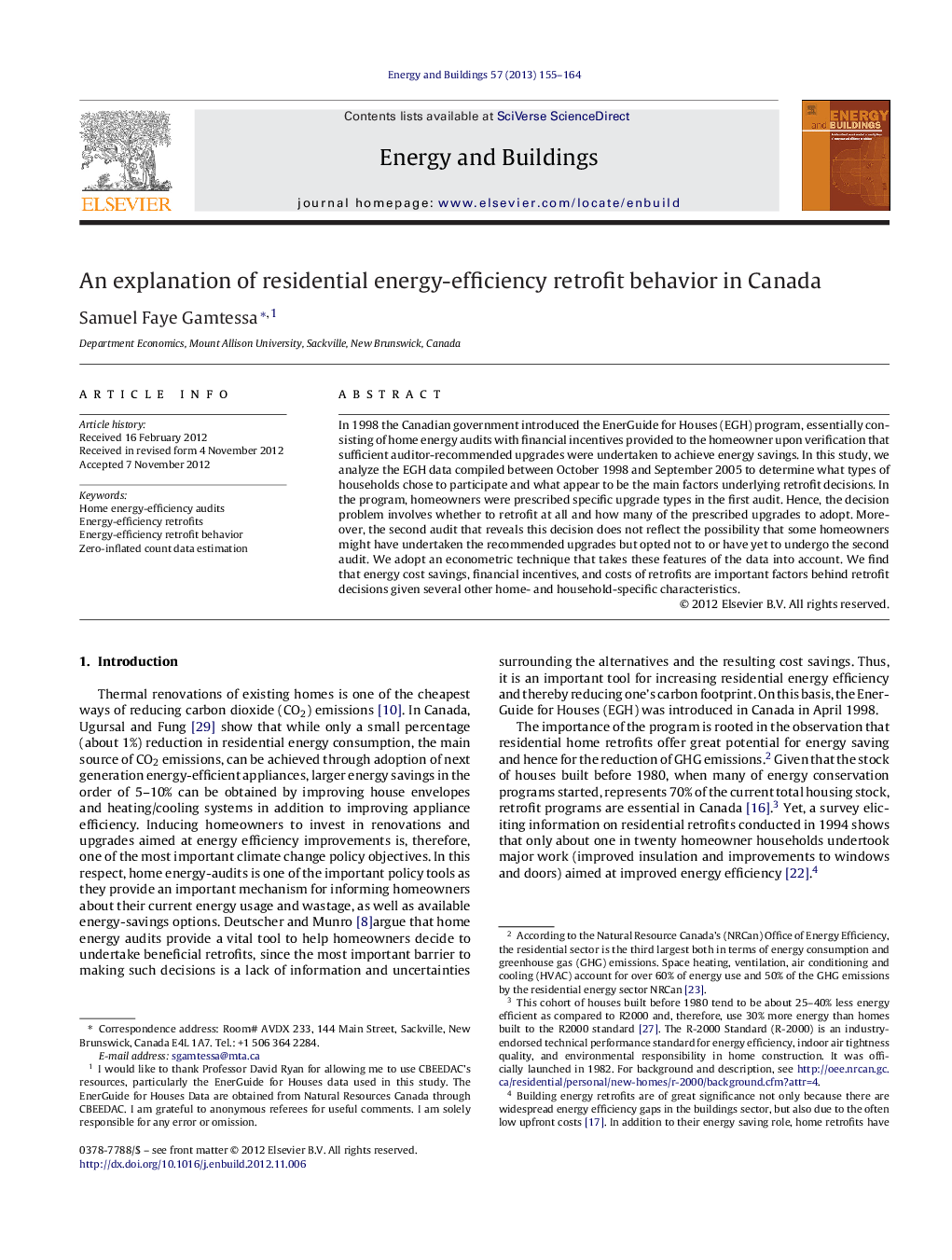| Article ID | Journal | Published Year | Pages | File Type |
|---|---|---|---|---|
| 263572 | Energy and Buildings | 2013 | 10 Pages |
In 1998 the Canadian government introduced the EnerGuide for Houses (EGH) program, essentially consisting of home energy audits with financial incentives provided to the homeowner upon verification that sufficient auditor-recommended upgrades were undertaken to achieve energy savings. In this study, we analyze the EGH data compiled between October 1998 and September 2005 to determine what types of households chose to participate and what appear to be the main factors underlying retrofit decisions. In the program, homeowners were prescribed specific upgrade types in the first audit. Hence, the decision problem involves whether to retrofit at all and how many of the prescribed upgrades to adopt. Moreover, the second audit that reveals this decision does not reflect the possibility that some homeowners might have undertaken the recommended upgrades but opted not to or have yet to undergo the second audit. We adopt an econometric technique that takes these features of the data into account. We find that energy cost savings, financial incentives, and costs of retrofits are important factors behind retrofit decisions given several other home- and household-specific characteristics.
► Less than 20% of homeowners implemented the recommended retrofits. ► Financial incentives resulted in increased participation. ► Retrofit costs and potential energy cost savings are the main determinants. ► Various household specific and building characteristics are also important. ► Low income households are more likely to undertake retrofits.
